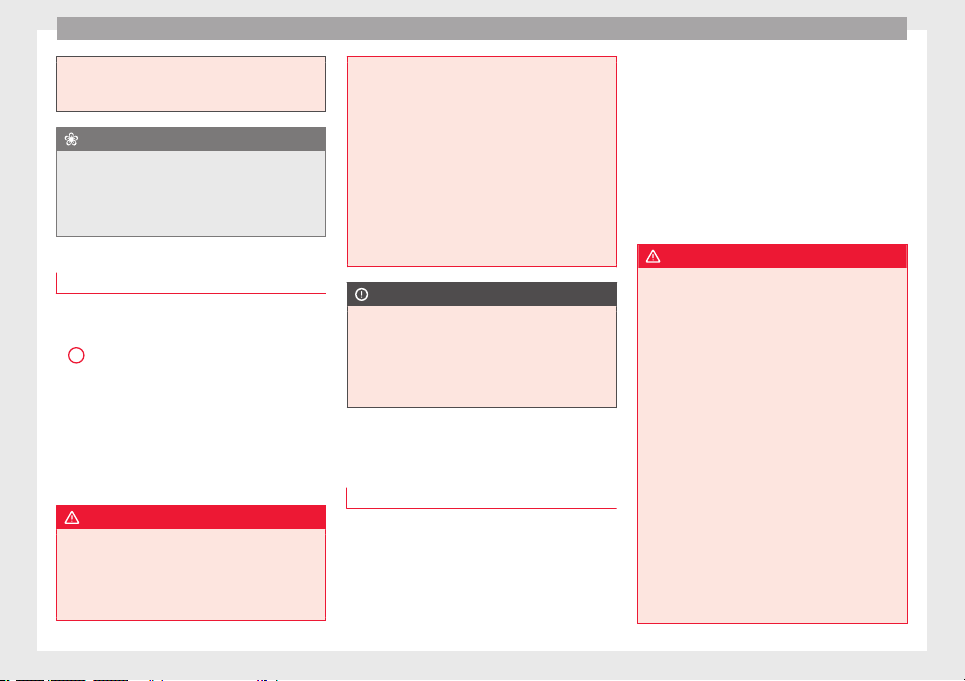Loading ...
Loading ...
Loading ...

Operation
start it using the battery of another vehicle.
Plea
se observe and follow the notes on the
›››
page 52, How to jump start.
For the sake of the environment
Do not warm-up the engine by running the
en
gine with the
vehicle stationary. You
should drive off as soon as you start the en-
gine. This helps the engine reach operating
temperature faster and reduces emissions.
Switching off the engine
–
Stop the vehicle.
–
Turn the ignition key to position ›
›
›
Fig. 168
1
.
Af
t
er sw
itching the engine off, the radiator
fan may run on for up to 10 minutes. It is also
possible that the fan turns itself on once
more if the coolant temperature increases
due to the heat accumulated in the engine
compartment or due to its prolonged expo-
sure to solar radiation.
WARNING
●
Never swit
ch the engine off until the vehi-
cle is completely stationary.
●
The brake servo works only when the en-
gine is running. With the engine switched off,
more strength is needed to brake. As normal
brake operation cannot be performed, risk of
accident
s and serious injury may exist.
●
The steering lock can be immediately
blocked once the key is removed from the ig-
nition. The vehicle cannot be steered. Risk of
accident.
●
Power-assisted steering does not work
when the engine is off, and more strength is
needed to turn the wheel.
●
If the key is removed from the ignition lock
the steering lock could be engaged and vehi-
cle steering would not work.
CAUTION
When the engine has been running under a
heavy lo
ad for a long period, heat can accu-
mulate in the engine compartment and cause
engine damage. For this reason, idle the en-
gine for approximately 2 minutes before
switching it off.
Braking and parking
Br
ak
in
g capacity and braking distance
The efficiency of the brakes depends directly
on the br
ak
e p
ad wear. This wear depends to
a great extent on the conditions under which
the vehicle is operated and the way the vehi-
cle is driven. If you often drive in town, drive
short distances or have a sporty driving style,
we recommend that you have the thickness
of your brake pads checked by technical serv-
ices more frequently than recommended in
the Maintenance Programme.
If you drive with wet brakes, for example, af-
ter crossing areas of water, on days of heavy
rainfall or even after washing the car, the ef-
fect of the brakes is reduced as the brake
discs are wet or even frozen (in winter): in
this case, the brakes should be “dried” by
pressing the brake pedal several times.
WARNING
Longer braking distances and faults in the
brake sy
stem increase the risk of accidents.
●
New brake pads must be run in and do not
have the correct friction during the first
200 km. This reduced braking capacity may
be compensated for by pressing on the brake
pedal a little harder, which also applies when
the brake pads have to be changed further
on.
●
If brakes are wet or frozen, or if you are
driving on roads which have been salted,
braking power may be lower than normal.
●
On steep slopes, if brakes are excessively
used, they will overheat. Before driving down
a long steep slope, it is advisable to reduce
speed and change down into a lower gear or
range (depending on the type of transmis-
sion). Thus, make use of engine braking and
relieve the brakes.
●
Never let the brakes “drag” by applying
light pressure. Continuous braking will cause
156
Loading ...
Loading ...
Loading ...